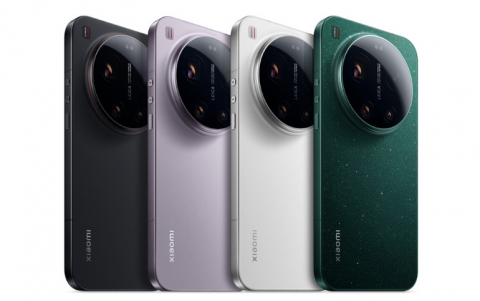
Five Japanese Companie's Proposal Wins Industry Acceptance for MPEG-4 Transfer Protocol Standardization
Five Japanese companies today announced that their jointly proposed format for transferring MPEG-4 streams over the Internet has now been accepted by three key organizations that promote development of Internet protocols. Toshiba Corporation, NEC Corporation, Oki Electric Industry Co., Ltd., Matsushita Electric Industrial Co., Ltd. and Nippon Telegraph and Telephone Corporation confirmed that the 3G Partnership Project (3G-PP) has joined the Internet Engineering Task Force (IETF) and the International Telecommunications Union (ITU) in supporting the standard, a move expected to bring uniformity to MPEG-4 content on the Internet and delivered over mobile networks.
The new transfer format is based on the Real-time Transport Protocol (RTP) standardized by IETF in 1996, rather than TCP/IP, which IP networks typically use for their transfer protocol. However, if TCP/IP detects any loss of data during transmission, it automatically retransmits it. The practical result is delays in data transfers that are unacceptable for real-time transfers of audio and video signals, particularly in streaming video and audio.
RTP is functionality suited for carrying real-time content as it provides support for applications with real-time properties, including timing reconstruction and loss detection. RTP uses UDP/IP, which doesn't have resending process characteristics. It places RTP headers in each packet that contains a timestamp, enabling synchronized display of audio and video signals at receivers, and sequence numbers to support packet loss detection. These characteristics enable timely data delivery with less degradation. RTP is widely used for audio and video distribution over the Internet, Internet tele-conferencing systems and Voice over IP (VoIP).
RTP is designed to define payload formats for each audio-video medium transferred. This is the area where the solution proposed by the five Japanese companies has been accepted for MPEG-4 audio and video signals.
A characteristic of the RTP payload format for MPEG-4 video is the provision of MPEG-4 error resiliency tools, to reduce packet loss. In order to improve transmission error resiliency, the MPEG-4 coding exploits the video packet approach within MPEG-4's error resilience tools, which subdivides the picture frames while coding. MPEG-4 also employs a technique called Header Extension Code (HEC), a 1-bit field introduced in each video packet. If this bit is set, the important header information that describes the video frame is repeated in the video packet. By checking this header information in the video packets against the information received at the beginning of the video frame, the decoder can ascertain if the video frame header is received correctly. If the video frame is corrupted, the decoder can still decode the rest of the data in the video frame using the header information that is repeated in the video packets.
The RTP payload format for MPEG-4 audio is an adoption of Low-overhead Audio Transport Multiplexing (LATM) technology, which effectively transfers multiple audio frames with a very low overhead.
It also offers an advantage in the comparative simplicity of the RTP format, in that audio and video streams are directly mapped onto the RTP packet and do not require specific headers or multiplexing.
The five companies held interoperability tests on the transfer format and confirmed its stability and reliability. The format was adopted by the IETF as the RTP payload format for MPEG-4 audio and video signals, by the 3G Partnership Project (3G-PP) in its packet switched multimedia streaming service standard for 3G mobile phones, and by the ITU Telecommunications Standardization Sector (ITU-T) in its recommendation for multimedia conferencing over packet-based networks such as LANs and the Internet.
The standardization will greatly contribute to promoting audio-video distribution on the Internet and in bringing the distribution service to next-generation cellular phones. It is especially important for such applications as Internet telephony and cellular telephony, where a high level of interoperability is required
RTP is functionality suited for carrying real-time content as it provides support for applications with real-time properties, including timing reconstruction and loss detection. RTP uses UDP/IP, which doesn't have resending process characteristics. It places RTP headers in each packet that contains a timestamp, enabling synchronized display of audio and video signals at receivers, and sequence numbers to support packet loss detection. These characteristics enable timely data delivery with less degradation. RTP is widely used for audio and video distribution over the Internet, Internet tele-conferencing systems and Voice over IP (VoIP).
RTP is designed to define payload formats for each audio-video medium transferred. This is the area where the solution proposed by the five Japanese companies has been accepted for MPEG-4 audio and video signals.
A characteristic of the RTP payload format for MPEG-4 video is the provision of MPEG-4 error resiliency tools, to reduce packet loss. In order to improve transmission error resiliency, the MPEG-4 coding exploits the video packet approach within MPEG-4's error resilience tools, which subdivides the picture frames while coding. MPEG-4 also employs a technique called Header Extension Code (HEC), a 1-bit field introduced in each video packet. If this bit is set, the important header information that describes the video frame is repeated in the video packet. By checking this header information in the video packets against the information received at the beginning of the video frame, the decoder can ascertain if the video frame header is received correctly. If the video frame is corrupted, the decoder can still decode the rest of the data in the video frame using the header information that is repeated in the video packets.
The RTP payload format for MPEG-4 audio is an adoption of Low-overhead Audio Transport Multiplexing (LATM) technology, which effectively transfers multiple audio frames with a very low overhead.
It also offers an advantage in the comparative simplicity of the RTP format, in that audio and video streams are directly mapped onto the RTP packet and do not require specific headers or multiplexing.
The five companies held interoperability tests on the transfer format and confirmed its stability and reliability. The format was adopted by the IETF as the RTP payload format for MPEG-4 audio and video signals, by the 3G Partnership Project (3G-PP) in its packet switched multimedia streaming service standard for 3G mobile phones, and by the ITU Telecommunications Standardization Sector (ITU-T) in its recommendation for multimedia conferencing over packet-based networks such as LANs and the Internet.
The standardization will greatly contribute to promoting audio-video distribution on the Internet and in bringing the distribution service to next-generation cellular phones. It is especially important for such applications as Internet telephony and cellular telephony, where a high level of interoperability is required





















